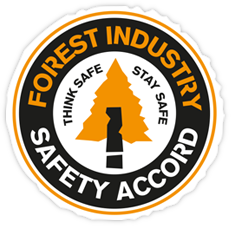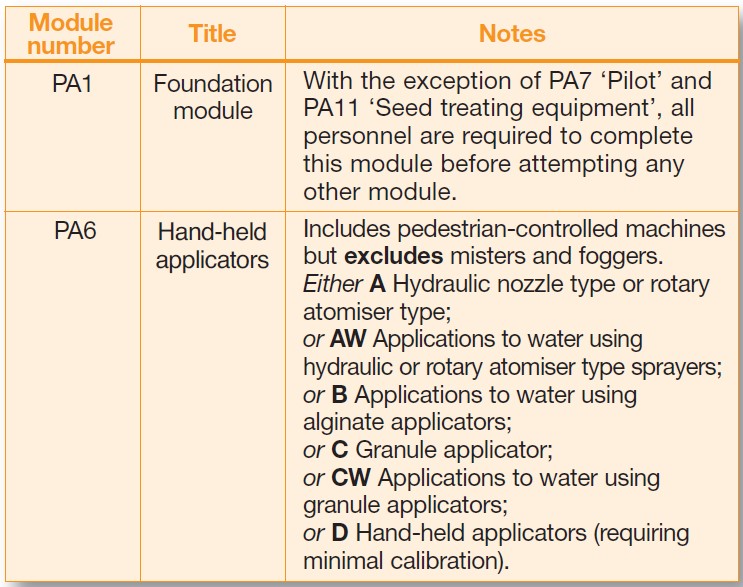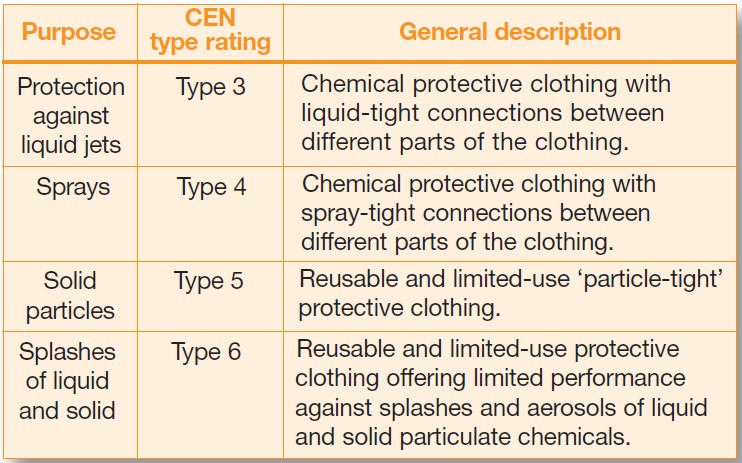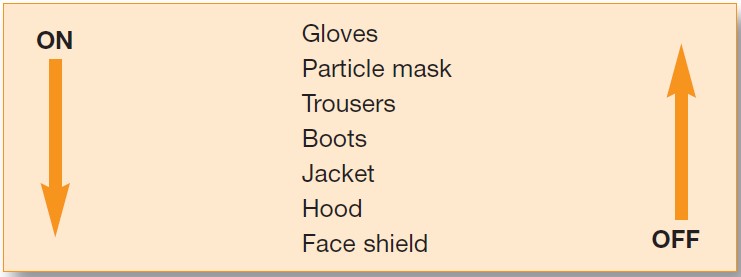Title Page
-
Site conducted
-
Conducted on
-
Prepared by
-
Operator / contractor
-
Location
INTRODUCTION
-
This template covers the pre-planting application of pesticides to container-grown seedlings for forestry and other tree work, and is based on the guide produced by the Forest Industry Safety Accord (FISA)
59 George Street, Edinburgh, EH2 2JG Tel: 0131 240 1410. -
FISA link: https://ukfisa.com/Safety/Safety-Guides/fisa-202
-
Template last modified: 01/07/2023
-
You can use this template as part of the risk assessment process to help identify the controls to put in place to prevent or adequately control the risk of contamination to people and the environment when applying pesticides. It should be read in conjunction with HSE’s Code of Practice for Using Plant Protection Products.
-
You must also assess the effect of the site and the weather as well as following this guidance. Useful practical guidance on appropriate and suitable weather conditions including wind speeds is contained in the publication Code of Practice for Using Plant Protection Products.
-
All operators must have had appropriate training in how to carry out the tasks required (see FISA leaflet 805 Training and Certification).
CERTIFICATES OF COMPETENCE
-
Table 1 - Required Certificate of Competence modules for hand-held applicators
-
1. Under the Control of Pesticides Regulations 1986 (COPR), operators must have had relevant training and be competent for the duties they are to perform. Operators born after 31 December 1964 or who will be spraying as a commercial service must hold the appropriate Certificate of Competence (see Table 1) issued by the National Proficiency Tests Council (NPTC) or Scottish Skills Testing Service (SSTS), unless they will be under the direct and personal supervision of a person who holds such a certificate. If born before 31 December 1964 and working on their own or their employer’s land, operators still need to be able to demonstrate competence and show proof of appropriate training.
PPE AND HYGIENE REQUIREMENTS
-
Table 2 - PPE coverall purpose and CEN type rating
-
2. Select (all applicable from list) PPE on the basis of label recommendations and a risk assessment under the Control of Substances Hazardous to Health Regulations 2002 (COSHH). At all times when handling concentrate or dilute pesticide, the operator must wear the protective clothing specified on the product label. For information see Table 2.
-
Table 3 - Order of PPE
-
3. Put on and take off protective clothing in the correct order to avoid contact with contaminated surfaces (see Table 3).
-
4. Whenever gloves or sleevelets have to be removed, thoroughly wash their outsides with soap and water and wipe off surplus moisture before removal.
-
5. Adequate washing facilities, ie soap and water and paper towels must be available. Where reasonably practicable, use a running artificial water supply for washing. Otherwise ensure that different water is used for gloves, for other protective clothing and for personal washing, and use different wash bowls for protective clothes and for personal washing.
-
6. Always remove gloves and thoroughly wash hands in soap and water before smoking or attending to personal needs.
-
7. At the end of each work period complete the following:
-
7.1 Thoroughly wash the outsides of gloves in soap and water and wipe off surplus moisture.
-
7.2 Thoroughly wash down the overall/suit.
-
7.3 Remove protective clothing in the correct order.
-
7.4 Thoroughly wash hands in soap and water and dry well.
-
8. Ensure washing waste does not contaminate watercourses.
-
9. Always put on, take off, hang to dry and store protective clothing away from rest and eating places, stored (clean) personal clothing, the personnel areas of vehicles and sources of contamination.
-
10. Replace damaged items promptly. Replace gloves regularly to minimise exposure to pesticides from any internal contamination.
-
11. Carry a first-aid kit (see HSE leaflet INDG214 First aid at work: Your questions answered). All operators and supervising personnel should know the symptoms of heat stress and how to treat it.
THE APPLICATOR
-
12. Make sure the applicator is in good working order at all times, completely free from leaks and, as far as possible, any external contamination.
-
13. Make sure spares and accessories are available – replacement nozzles, seals, washers, maintenance tools and calibration equipment.
EMERGENCY PROCEDURES
-
14. Ensure a designated and responsible person knows the daily work programme and agree with them a suitable emergency contact procedure. Where reasonably practicable use a mobile phone or radio and a pre-arranged call-in system.
-
15. Ensure the operators can provide the emergency services with enough detail for them to be found if there is an accident, eg the grid reference, the distance from the main road, the type of access (suitable for car/four-wheel drive/emergency service vehicles). In urban areas street names are essential. Know the location details before they are needed in an emergency. (Also see FISA leaflet 802 Emergency planning.)
-
16. Ensure information about the pesticide being used is readily available in a form that can accompany a person requiring medical attention (eg a hazard data sheet).
PLANNING TO SPRAY
-
17. Always plan thoroughly and in good time.
-
18. Do not use a pesticide if there is a suitable alternative control.
-
19. Always use the pesticide product that presents the least risk to health and the environment while achieving effective weed or pest control.
-
20. Check the precise location of any domestic water supply, rivers, streams, ditches or ponds. Plan to leave a suitable buffer strip (see product label) to avoid contamination.
-
21. On all reasonably foreseeable approaches to the worksite, erect warning signs conforming to the Health and Safety (Safety Signs and Signals) Regulations 1996, indicating a hazardous worksite and advising the public that they should confine themselves to identified routes. In areas of very high public access, your risk assessment may show that additional controls (eg barrier tape, barriers, extra manning) are required. See the product label for any mandatory exclusion periods.
-
22. Where appropriate, inform local bee-keepers (see product label) and neighbours in advance of your intention to apply pesticides.
-
23. Check the work area to locate the position of any hazards, eg deep ditches or broken ground.
-
24. Identify safe areas for diluting and mixing pesticides and for filling applicators. Make arrangements to deal with accidental spillage, eg absorbent material, a shovel, plastic sacks.
-
25. Identify an area for washing protective clothing and applicators. Make provision for safe disposal/removal of washings.
-
26. Ensure supplies of fresh water will be available for dilution and washing. To prevent contamination of water sources water should not be taken directly from a natural supply, nor should a domestic supply be connected into any spray solution.
PREPARING TO SPRAY
-
27. Read the pesticide product label carefully (or the text of any off-label approval) and fulfil the legal requirement to comply with its contents regarding:
-
28. Take into account any additional advisory information provided on the product label.
-
29. Transport pesticides by a secure means to avoid spillage. Ensure containers cannot be damaged. Keep them separate from the driver and passengers by using a vapour-proof bulkhead, or a purpose-made chest or trailer.
-
30. Ensure safe storage of pesticides on site. Unless adequately secured against theft, do not leave containers unattended or out of your sight. Label all containers clearly, indicating their contents and any special hazards.
-
31. Ensure food and other personal equipment are placed outside the working area.
-
32. Check the wind speed is within the prescribed limits (see the Code of Practice for Using Plant Protection Products for guidance).
-
33. Allow for wind direction to avoid overspraying water courses, water supplies, non-target crops and livestock.
-
34. Calibrate the applicator carefully using plain water, eg by selection of nozzle, pressure or walking speed, to achieve the chosen spray application rate within the approved dose rate for the product.
-
35. Do not mix more pesticide than can be used during the work period.
-
36. Mix pesticide strictly according to the label instructions.
-
37. Never use bare or gloved fingers to clean out residues from concentrate containers. Replace caps immediately after use.
-
38. Ensure liquids do not splash. Pour slowly with the container opening at the top to avoid glugging.
-
39. Wash out empty liquid concentrate containers and use the washings to make up the spray solution.
-
40. Handle wettable powders carefully to avoid dust.
-
41. Stand upwind so that any dust from granules will be blown away from you when filling an applicator.
-
42. Wash off any contamination by pesticide concentrate immediately.
-
43. Puncture or crush empty concentrate containers, but do not obliterate the label.
SPRAYING
-
44. When putting on a filled knapsack sprayer, stand it on a support or get assistance to avoid injury or spillage.
-
45. Do not work in your own or someone else’s spray drift.
-
46. Minimise walking through treated areas.
-
47. Stop if you see anyone approaching from the downwind side.
-
48. Constantly monitor the workings of your applicator for leaks, mechanical defect, pressure setting and spray quality.
-
49. Depressurise sprayers before carrying out maintenance.
-
50. Do not suck or blow through the nozzle or any other part of the applicator to clear blockages.
-
51. Do not take off gloves when removing nozzles.
-
52. If you feel unwell, report the symptoms and seek medical advice as soon as reasonably practicable, giving details of the work concerned and the full name of the pesticide product used.
AFTER SPRAYING
-
53. If there is surplus dilute pesticide at the end of the day, put it into a clearly labelled secure container and return it to the store for subsequent use or disposal.
-
54. Wash out empty applicators and empty spray solution containers, and dispose of washings on site. Ensure that washings do not contaminate watercourses. Wipe applicators with clean paper towels and put used towels in plastic bags for safe disposal.
-
55. Dispose of surplus pesticide, empty containers and cleaning materials in accordance with the Code of Practice for Using Plant Protection Products.
-
56. If you are an employee who uses anti-cholinesterase compounds, such as organophosphorus pesticide products, classified as toxic or very toxic, you should be under health surveillance arranged by your employer.
WEATHER CONDITIONS
-
57. Stop operations if the wind speed exceeds the range specified or changes to an unsuitable direction.
-
58. Remember that wearing protective equipment places greater stress on the operator and weather conditions can increase this. Take extra rest and stop if you feel unwell.
SIGNATURE AND FURTHER COMMENTS
-
Any additional comments?
-
Contractor signature









